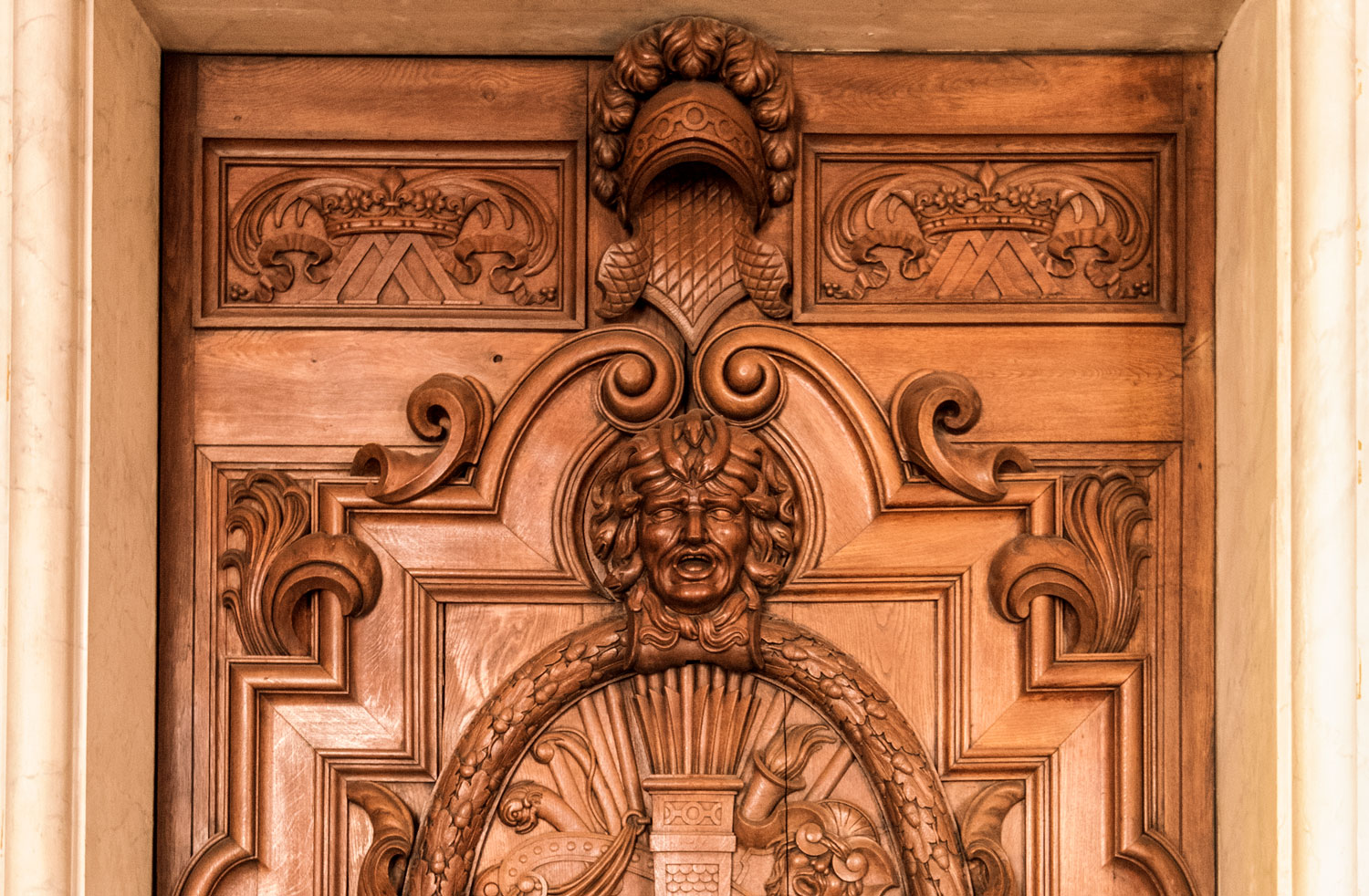Making an Entrance
Photos by Forrest Anderson
One thing about the French, they certainly know how to make an entrance.
French cities and towns have thousands of buildings with gorgeous carved doors decorated with faces, animal or human heads, elaborate floral designs, scenes and royal motifs. These exterior and interior doors have a long history that harks back to ancient civilizations, kings’ courts, Gothic cathedrals and the Renaissance.
They combine the crafts of wood carving, metal working, stone and painting to turn everyday items — doors — into exuberant masterpieces of art.
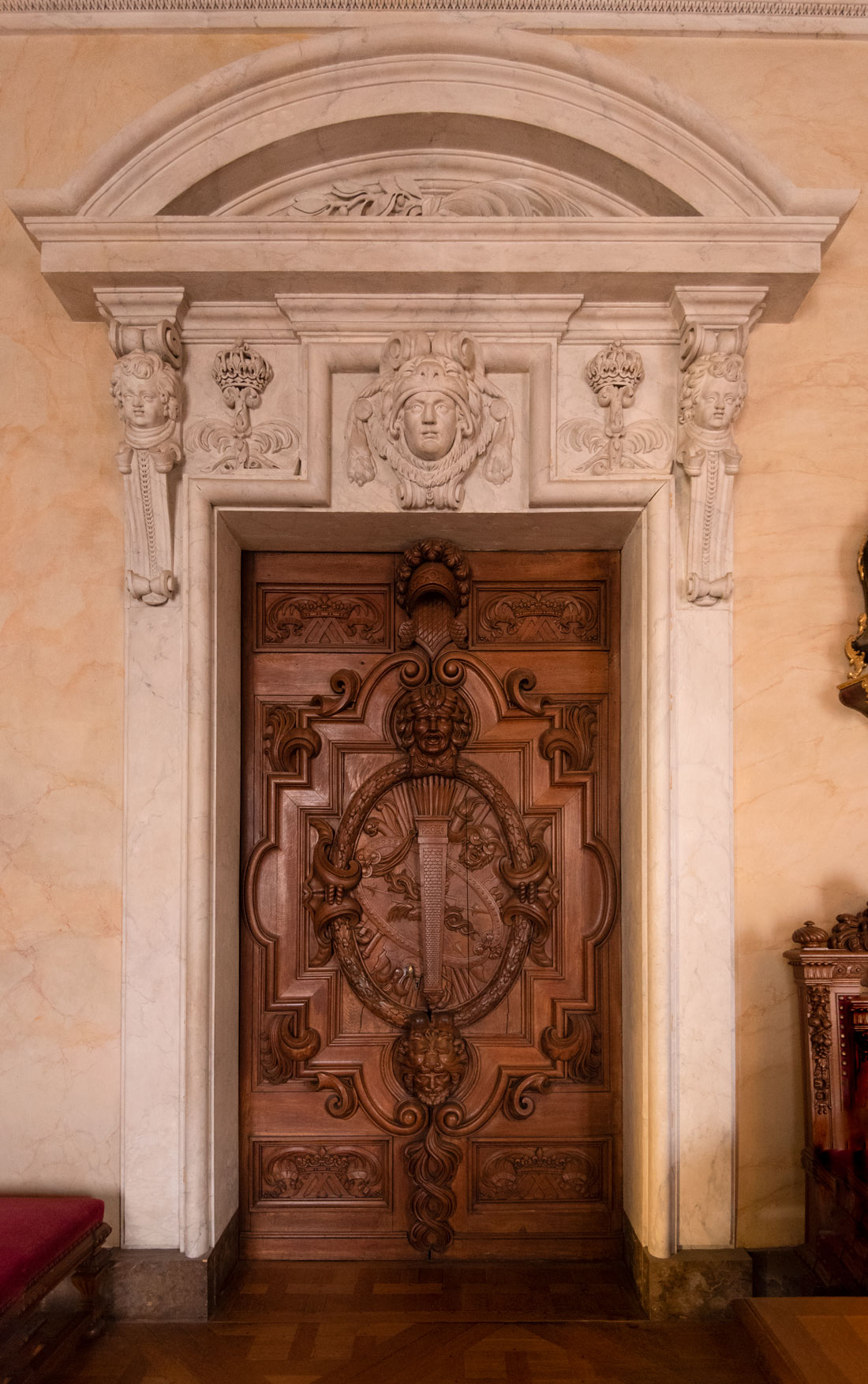
Carved door at Fontainebleau outside Paris.
France’s doors are a subset of a long-standing tradition of fine craftsmanship that also produced superb church, palace and home décor and furnishings.
The craft of wood carving in Europe and around the Mediterranean Sea is very old, but ancient examples have survived only from very dry climates such as Egypt. Little is known outside of historical references about wood carving in Assyria, Greece and Rome in ancient times.
However, elaborately carved doors have long had immense meaning in Mediterranean culture. In ancient Egyptian tombs, a false door in a wall decoration was common and represented a gate to the afterlife. The Roman god Janus was the god of doors and archways. The Janus Geminus, a famous bronze door in Rome, was a shrine to Janus. It was closed during times of peace and open during times of war.
Solomon’s Biblical temple had elaborately carved doors, and Homer wrote of doors cased in silver or brass. Gates in city walls were among the most important doors. Soldiers marched to war through city gates, lending to a worldview that whatever was outside the walls was profane and evil. Roman and other soldiers had to be purified through religious rites under the gates of a city before entering it. The Roman Senate erected triumphal arches so that returning armies could be sanctified under them. The French borrowed this motif in the Arc de Triomphe in Paris. The tradition continued in Christian times, with Benedictine monks returning from a journey undergoing purification before rejoining their walled monasteries.
Portals of houses were under the protection of household gods, and door thresholds were considered sacred. At the threshold of a place where a town was to be built, the Romans indicated where the walls would be placed by creating a furrow with a plow. Where the town’s gates were to be, the plow was carried or ported for a short distance. The undisturbed soil where the gate was to be was considered sacred. From this custom sprang the word “portare” for gate.
Later under Christianity, thresholds were seen as virginal, undefiled space, associated with the Virgin Mary who was the gate through which Christ came to earth and who was believed to stand at the threshold of heaven to greet the faithful as they passed through. This symbolism can be seen on cathedrals such as Notre Dame in Paris which have images of the Virgin Mary at the doors. Double entrances on churches also symbolize Christ’s divinity and humanity.
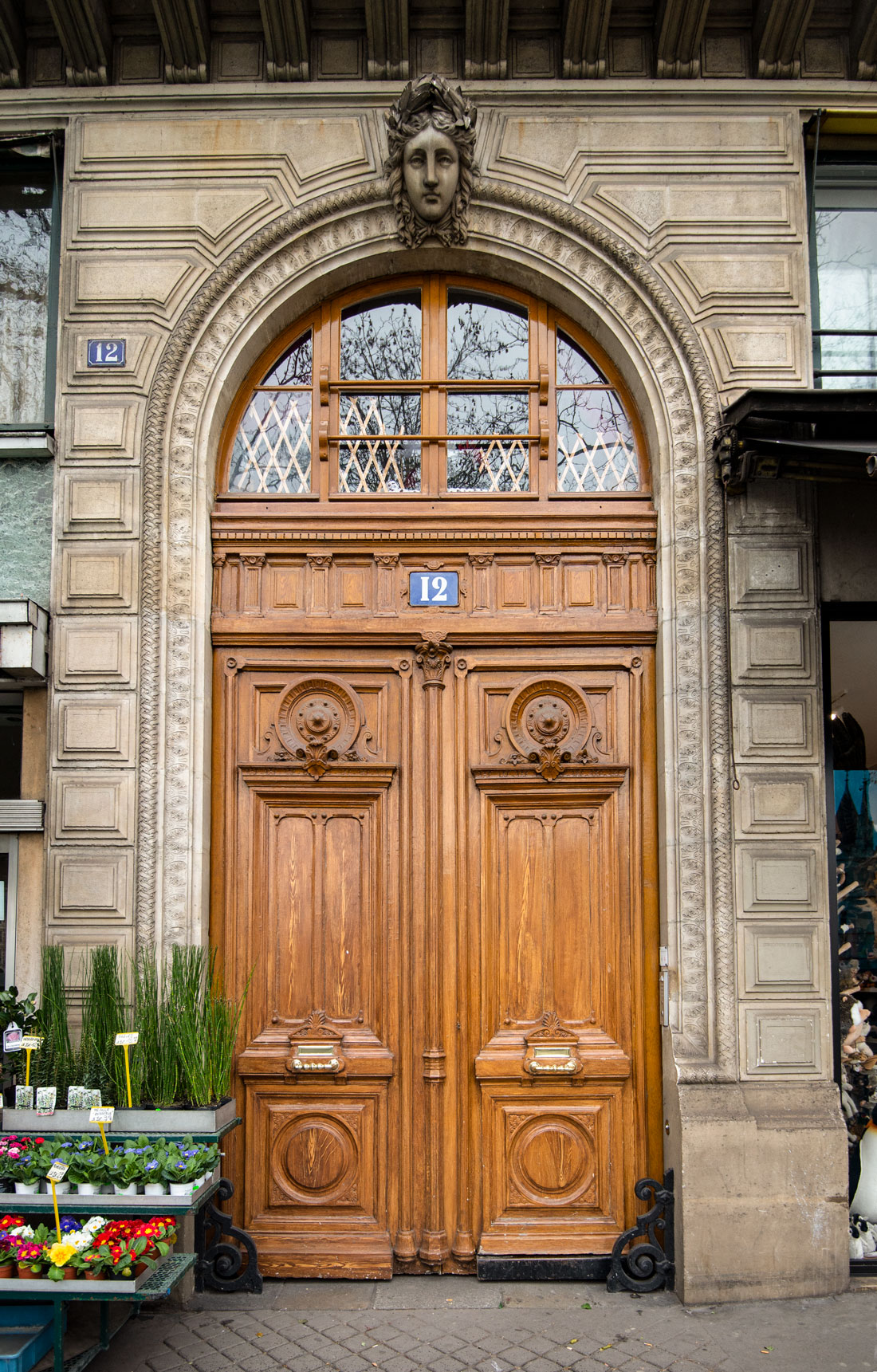
Early doors had pivots on the top and bottom on which the doors swung. It is unknown when builders moved to hinges. Usually, three bands with ornamental work were the hinges, with rings outside the hanging stiles that fit on vertical tenons set into the masonry or frame. The metal work of the doors of Notre Dame Cathedral de Paris is one of a number of French examples.
Church doors are among the finest in France, some added after local people survived plagues or wars as a way of giving thanks to God for sparing their lives. The doors have religious significance in French Catholicism. The symbolism of leaving the world and going into a sacred space through doors goes back to ancient Rome and is in a number of references in the New Testament. Church doors are related to Christ's Biblical admonition, “knock and it shall be opened to you.” (Luke 11:9) The New Testament symbolism of doors and gates in turn goes back to the Old Testament, when gates signified entry into the Holy City of Jerusalem and city gates were a gathering place where leading wise men judged the people and discussed local matters.

Door on Church Saint Pierre, Paris, France.
The magnificent Capitol at the end of the Roman Forum eventually was developed into the Christian cathedrals, which were considered representations of the heavenly Jerusalem for weary pilgrims. The gates of these cathedrals represented the doors through which they would enter into the eternal city of God.
In old Christian churches across the Mediterranean, doors are considered holy. Pilgrims approach them burdened with sin and wishing to be cleansed and then walk through them praying and singing, to be baptized and purified inside. The key that locks and unlocks the church’s entrance is Christ, acting through St. Peter who holds the keys of the kingdom of heaven. In the early Middle Ages, the popes sent keys of gold and silver that had been placed on the tomb of St. Peter to kings and princes.
Other gates besides those of churches were important. People walked through a gateway to begin their profession or trade, and walked through the doorway that was to become their home on their wedding day.
The most humiliating fate in Christian tradition was to be forcibly thrown out into the street or driven into exile through the gates of one’s native city. Christians who had committed grave sins were punished by a kind of religious exile - excommunication. In this rite, the bishop led those who were excommunicated out through the doors of the cathedral. Upon their later repentance and readmission, the bishop would stand at the entrance of the cathedral and lead them back into the church.
Some ancient Christians believed that the soul after death wandered about until it came to the doors of Paradise, passing first by various doors behind which were threats. One known as the lion’s mouth was the entrance to a dungeon in which prisoners were strangled. Thus the Requiem Mass asked that the souls of the faithful be delivered from the jaws of the lion, lest they fall into darkness and be swallowed in a black gulf. Another gate that the dead encountered was the gates of hell.
Walking through doors was intended to increase respect and heighten anticipation of what was beyond. Thus, many religious buildings and grand homes have multiple gates or doors through which visitors pass.
Some of the earliest wooden doors still extant are the 5th century doors of Saint Sabina on Aventine Hill in Rome. They are made of small square panels carved with scenes from the Bible. The French borrowed this style on a number of church doors.
By the Middle Ages, the French were creating elaborately carved wooden items for cathedrals, abbeys and other religious sites, including doors. The great era of French wood carving was from the 12th to 15th centuries. The carving was inspired by religious fervor, with legends of saints and scenes from the Gospels as themes. The 12th century carvers also worked other themes into cathedrals – mermaids, dragons, elephants, theater masks, knights. Little of their superb work remains in churches, but some is in museums.
The height of this craft was in the 15th century. In these Gothic churches, many wood carvings were painted red, blue, green, white and gold gilding. The painted carvings created a riot of color along with elaborate priest vestments, banners, incense, frescoed walls and stained glass windows.
Carvers traveled from church to church embellishing them. These carvers were given general plans to use, but they poured their own styles and treatments into the work, which resulted in wide diversity and charm. They rarely repeated details. Their work are the ancestors of all French wood carving that followed.
Many examples from the 15th century survive, including magnificent screens with large crucifixes and figures of the Virgin Mary and the Apostle John. Heads, foliage, pinnacles, crests, birds, dragons, and saints under niches or other painted figures were common. Ceilings were carved with foliage or angels carrying shields. Benches placed in churches were elaborately carved. Areas around and above baptismal fonts were carved, often with doves to depict the descent of the Holy Spirit at the time of Jesus Christ’s baptism. No items were carved more beautifully than the doors of churches from this period. Many carved doors not only on churches but also on private houses still exist.
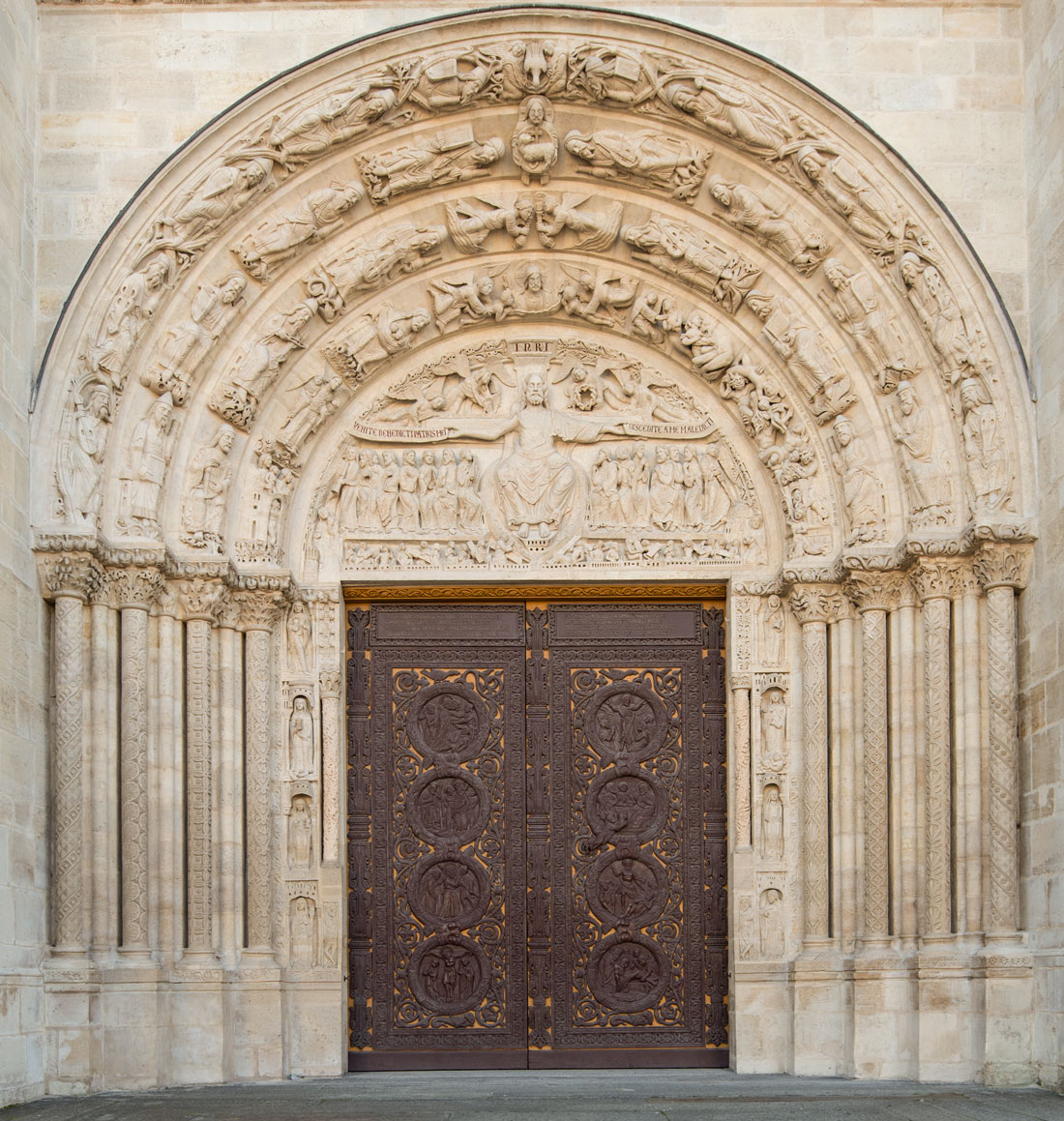
Door on the Basilica of Saint Denis, Paris, France.
Scenes or motifs were carved on panels which then were assembled into doors, cabinets or chests. Knights in armor standing under arches, dragons, faces, hunting scenes and coats of arms with helmets and swords were among the motifs carved on panels, along with religious themes. Michaelangelo called such paneled doors the “gates of paradise.” They were made of both wood and metal.
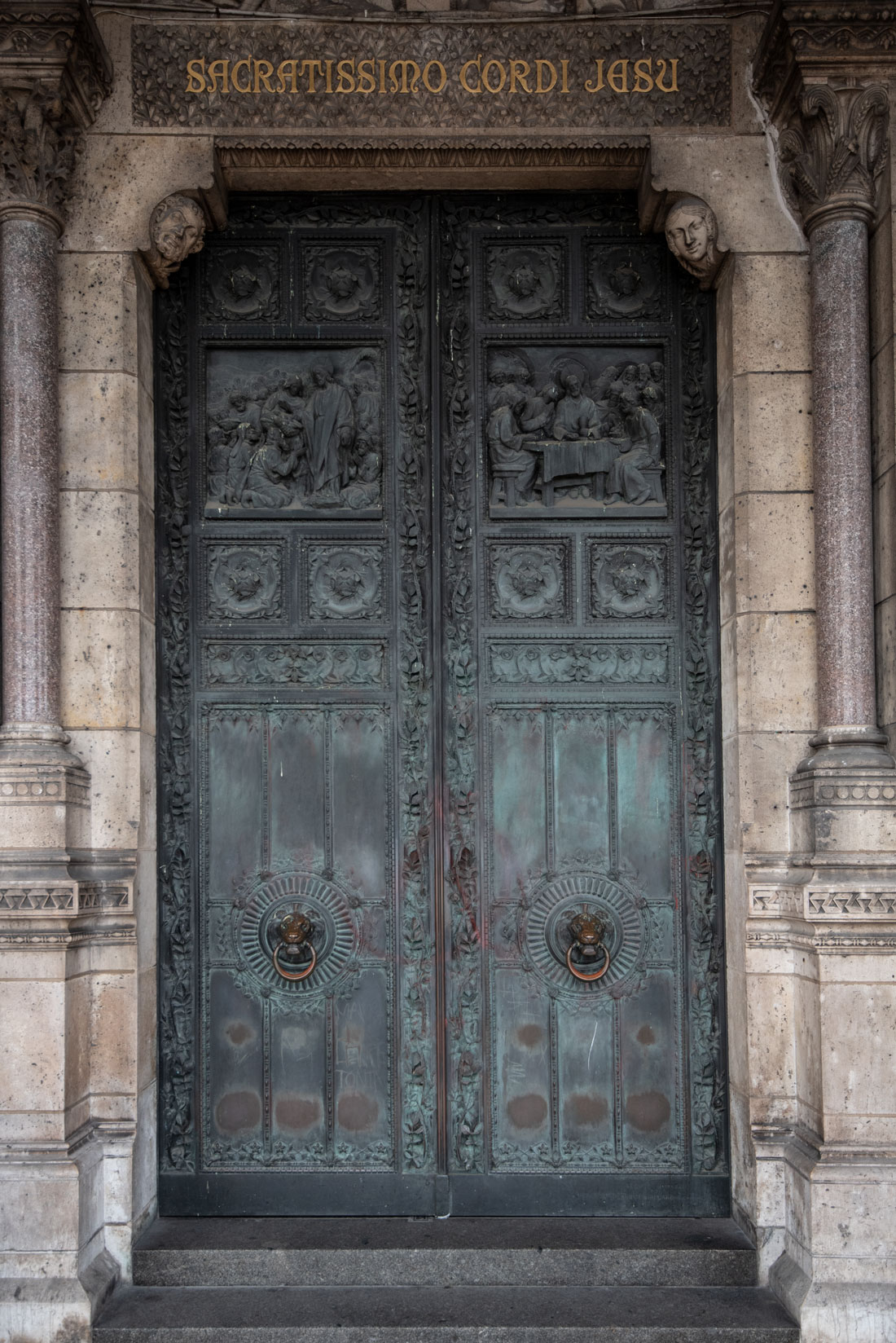
Door on Sacre Coeur, Paris, France.
In the 16th century, Renaissance style overtook Gothic design. Door craftsmanship was at its finest in this period. Many examples of Renaissance wood carving are extant, from doors, cupboards, bedsteads and mantelpieces to staircases with elaborate carvings of soldiers and heraldic figures. Doors were not only carved but decorated with mirrors, medallions and garlands, with carytids as support posts. Doors were studded with hand-forged iron nails. The finest doors were created for cathedrals, most carved from fine cedarwood. Some had high canopies and niches that housed figures.
In the 17th century under Louis XIV and XV, cherubs’ heads, torches, classical scenes and musical instruments were carved on panels, including doors. France led in this style, which was copied all over Europe. Palm fronds, drapery swags, chimeras, leaves, cornucopias, vases, eagles with spread wings, human masks radiating solar rays, grotesque faces, axes, shields, helmets, arrows and lion and rams heads reflected the era’s emphasis on power. Doves and dolphins appeared along with Oriental themes such as sultans and pashas.
Wooden sculpture declined as a means of decorating houses in the 18th century. Women’s heads, bat’s wings, monkeys, pagodas, peacock feathers, parasols, humpback bridges, misshapen rocks and exotic flowers became popular motifs for carving that was done. The Louis XVI period (1760-1789) was simpler and inspired by objects unearthed at ancient sites and elements of nature.
The use of wrought iron on doors began in the late 1700’s and flourished in the 1800’s during the Industrial Revolution. The fancy iron grills at the top of many doors were functional - fresh air was drawn in through those openings and flowed through to an inner courtyard where it would rise up and out an opening at roof level, helping to cool the interior. Wrought iron also was used for hinges, locks, handles and metal studs. Bronze was often used as ornamentation and to reinforce the structure of a door.
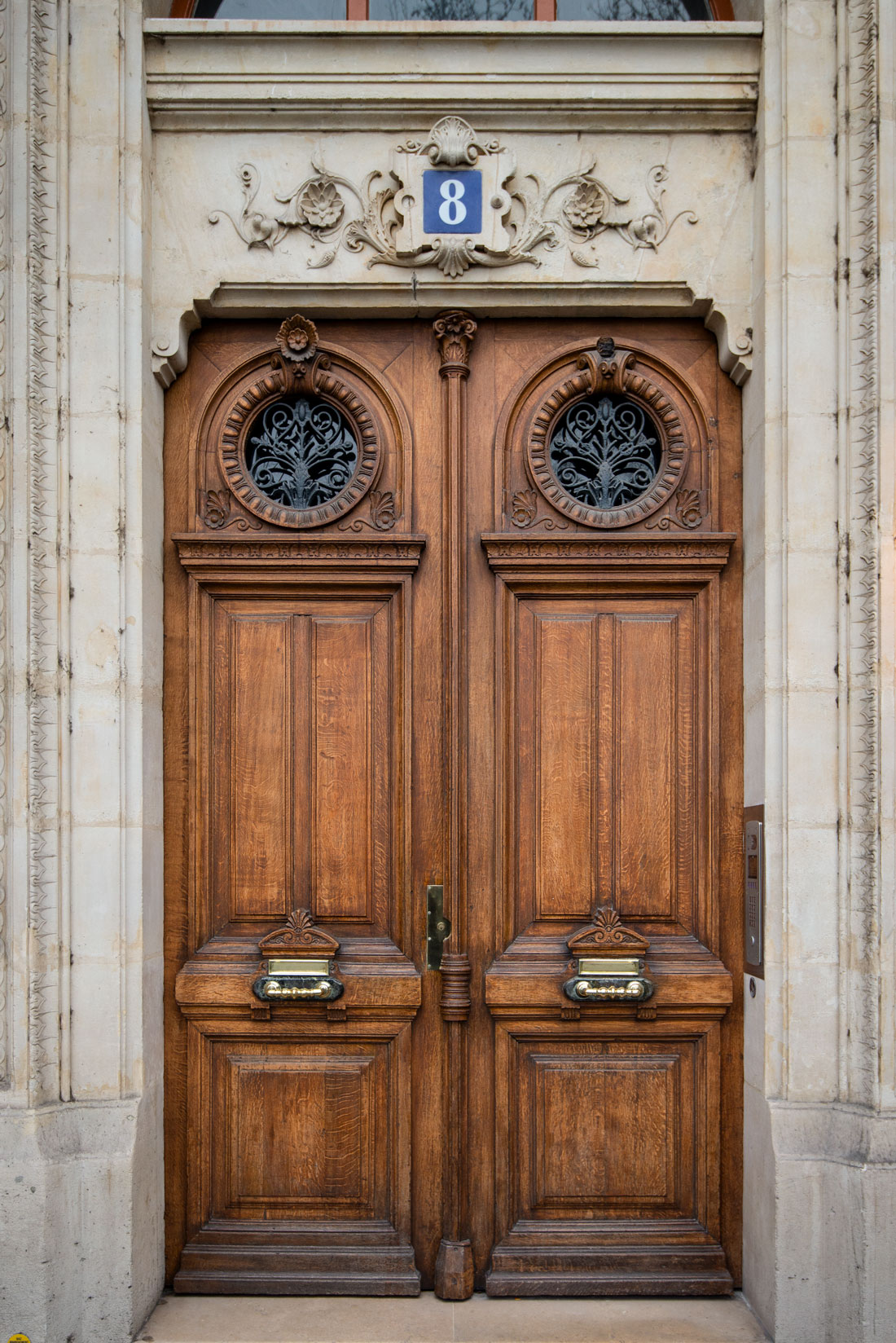

During the 1789-1804 French Revolution, the furniture guilds were suppressed. Wooden objects produced during this period were inspired by Greece and Pompeii and were clean and flat. After the French military expedition into Egypt, sphinxes, lotus flowers, pyramids and carytids became popular motifs.
Under Napoleon I, artistic production was centralized and woodworking guilds disbanded, resulting in a uniform monumental style with Napoleonic emblems such as bees, eagles, stars and imperial laurel crowns as well as figures of Victory bearing palm branches, Greek dancers, women, and masks of Apollo and Hermes.
With large-scale production came practical designs and copies of earlier styles, especially the Renaissance, along with Asian, African and Native American imagery.
In the 20th century, Art Nouveau brought botanical designs, followed by Art Deco.
The thousands of carved doors in Paris and other French cities draw on all of these styles, incorporating statues, bas-reliefs, gold leaf and artistic metal handles.

Door at Fontainebleau palace outside Paris.
They range from the monumental doors of churches and official buildings to small, elegant residential doors. The doorway is the centerpiece of many buildings, and doorways can be a way of dating a building. Some older doors are porte-cochères or carriage entrances into courtyards. They have studded nails that effixed wooden plaques arranged in decorative grids. The nails protected the wood from damage caused by carriages knocking against it.
Most doors are polished wood, while some are painted red, blue, green or burgundy. France has a tradition of painting doors blue. In southern France along the Mediterranean Sea, houses and buildings were traditionally painted white with blue doors and trim because Mary was the patron saint of fishermen and associated with the colors blue and white.
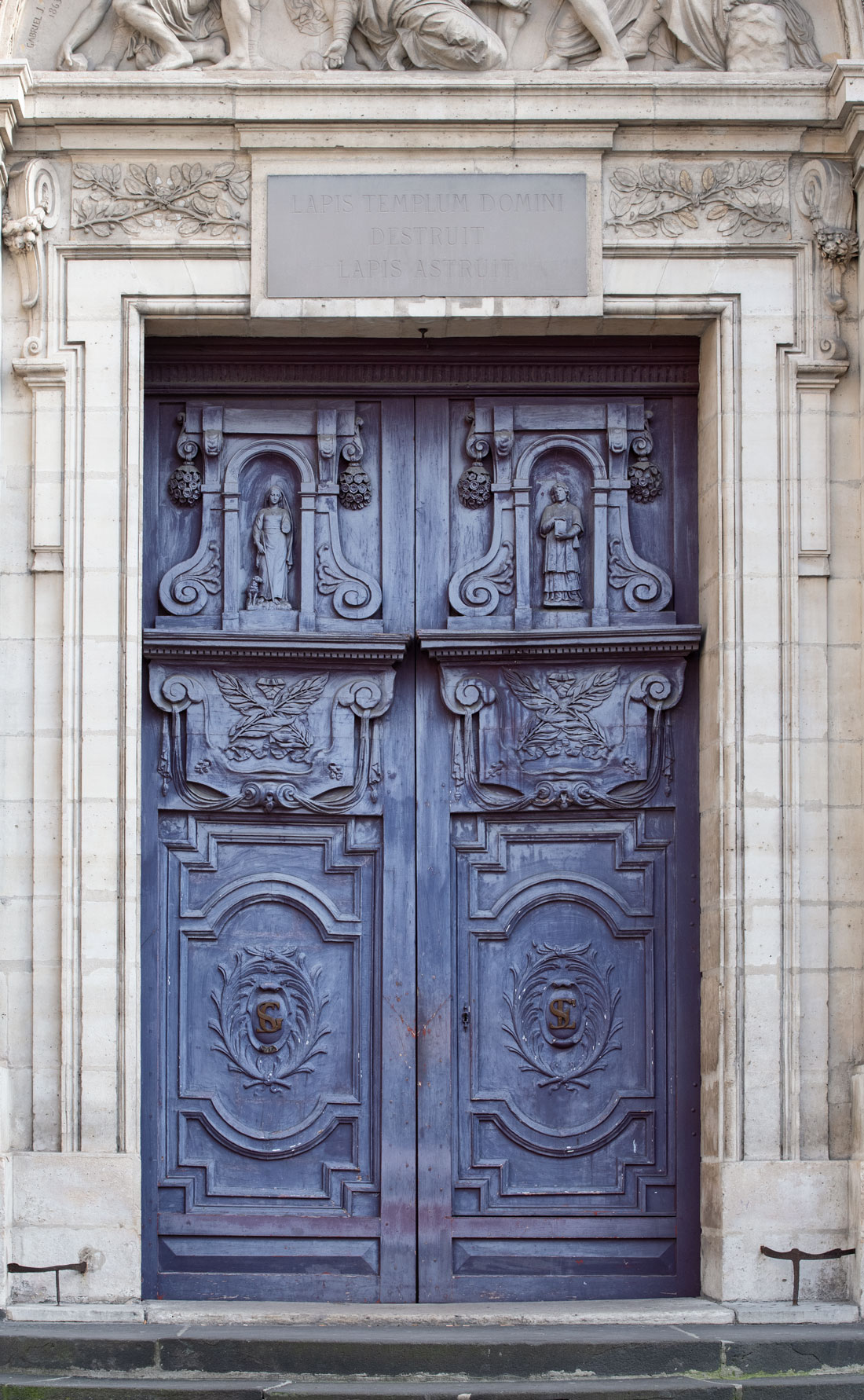
Blue is traditionally used to represent France and has been part of French royal heraldry since at least the 12th century, with the golden fleurs-de-lis of the kings set on a blue background. An angel is supposed to have presented a blue shield to Clovis, the first king of all Franks. French kings thus wore blue vestments at their coronations and had a blue royal shield. In modern times, brighter blue is part of the French Tricolour flag which symbolizes equality. French sports teams normally use blue as their main color and Les Bleus are the national soccer team. The team name is meant to evoke a sense of equality, because the players come from different ethnic, racial, religious, and social backgrounds.
Many doors have ornate brass knockers and handles. Some are 300 years old and are opened with an antique key.

Door handle, Privas, France.
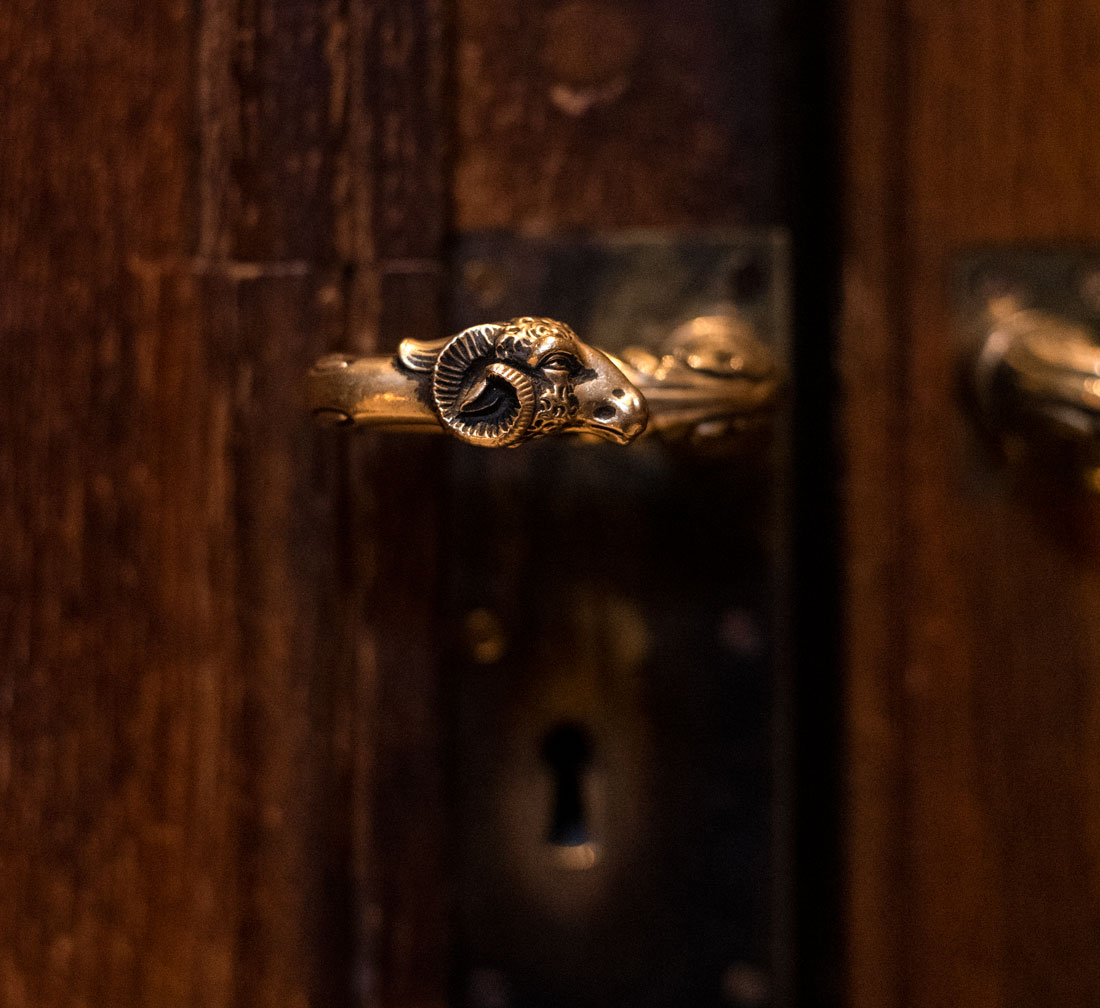
Ram's head on hardware at Fontainebleau outside Paris.
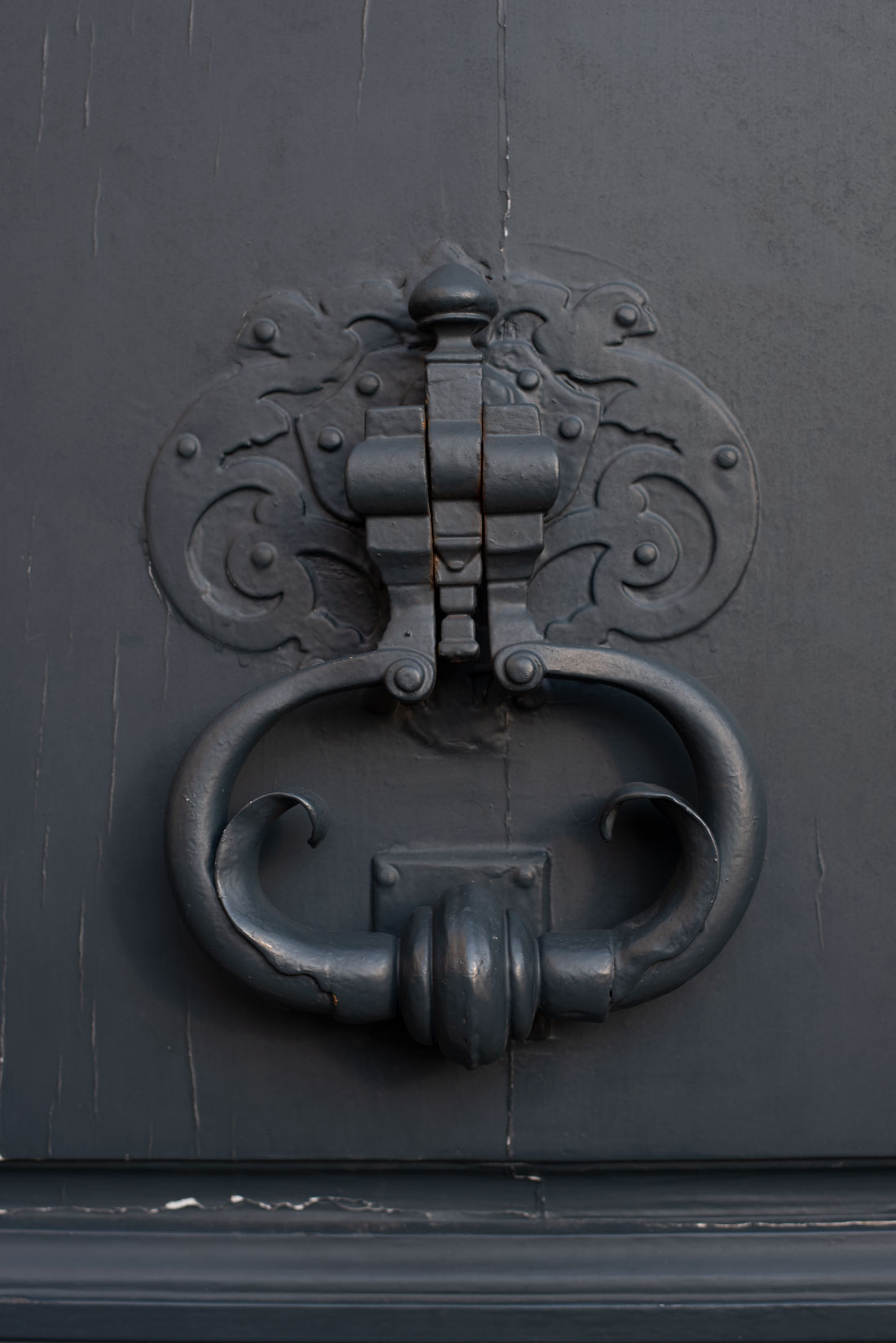
A door knocker.
The exterior doors are especially charming in the evening, when lights illuminate details on them.
Lyon, France’s third largest city, is a great place to see beautiful French doors. In a narrow strip along the Saône River called Vieux Lyon, or Old Lyon, are some of the loveliest 19th and early 20th century doors. This area has what are called traboules, or Medieval/Renaissance areas behind closed doors that contain passageways, towers and courtyards. Lyon has some 230-500 traboules.
Perhaps as early as the 4th century, these passageways were built to give Lyon residents access to the river, which was the main water supply. Workers used them during the Renaissance to move between their workshops and merchants along the river. The Resistance also used the traboules during World War II. The hidden nature of the traboules was a way in which wealthy people veiled their wealth. Many of the traboules now are open to the public in the mornings and many have beautiful doors.
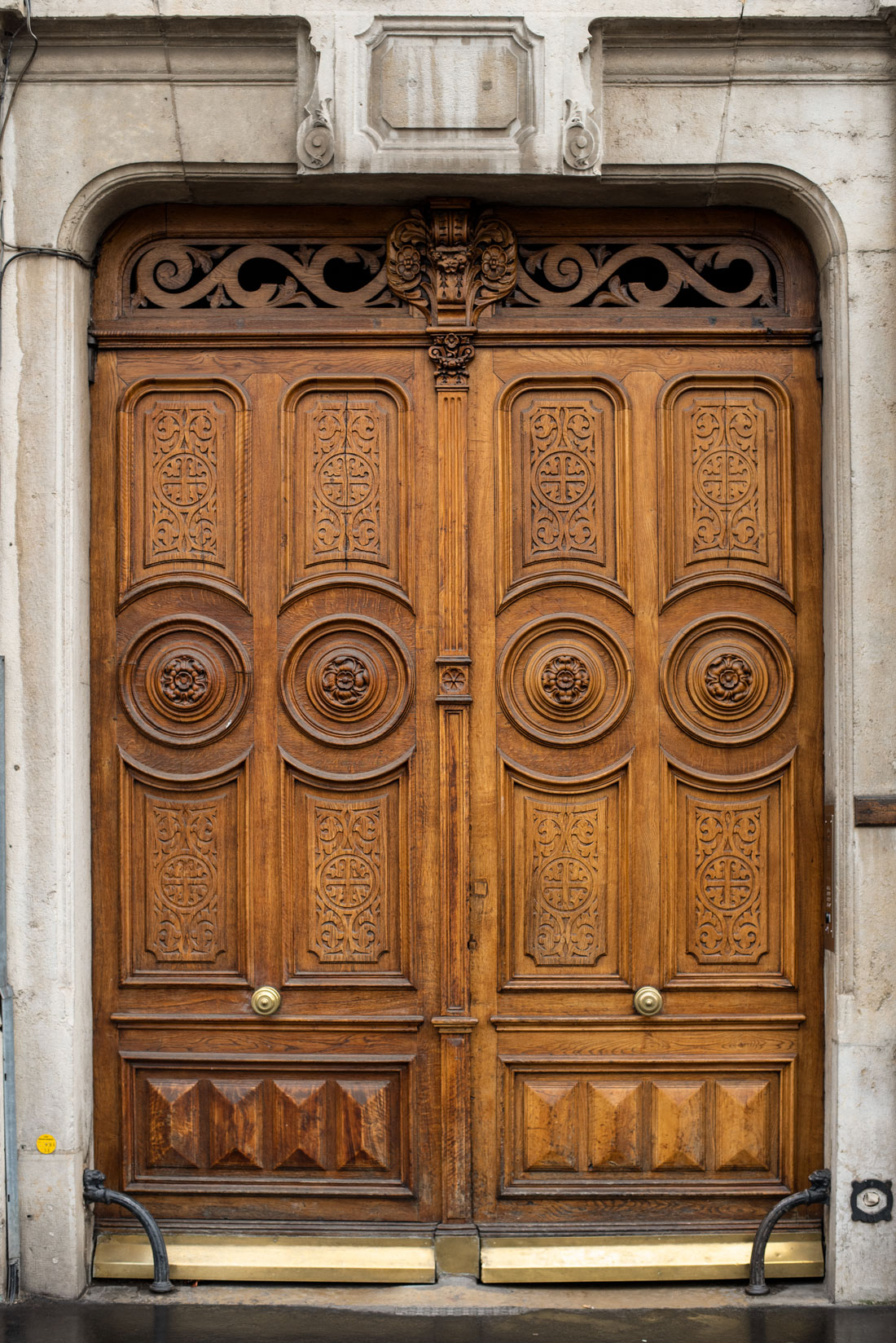
A door in Lyon, France.
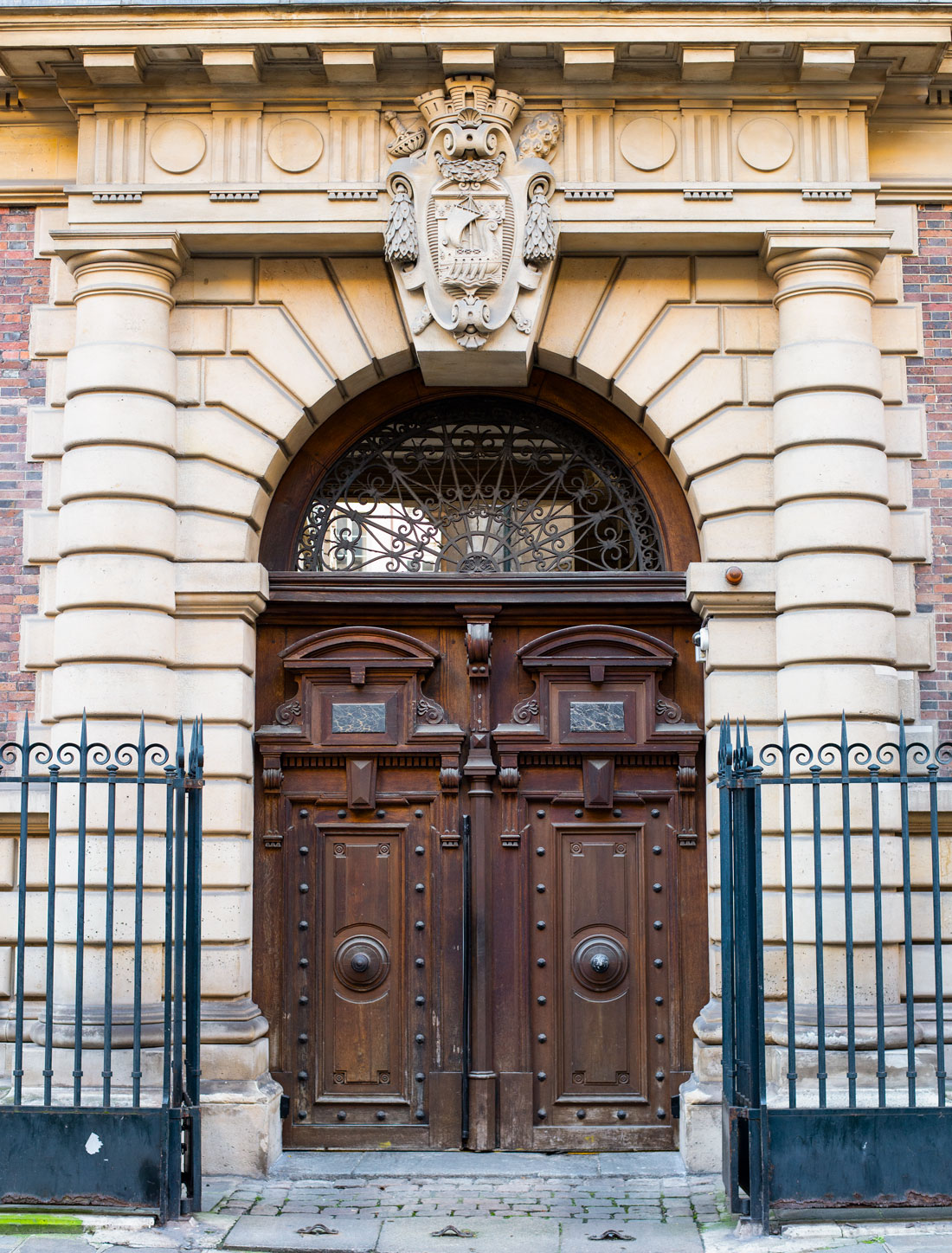
This door in Paris draws on royal tradition.
Check out these related items
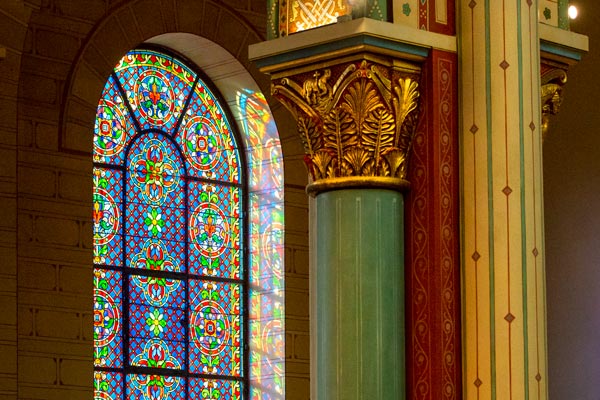
Paris’s Oldest Church Restored
Paris' oldest church, Saint Germain des Prés, is emerging from layers of grime and soot as a meticulous restoration reveals its vibrant color.
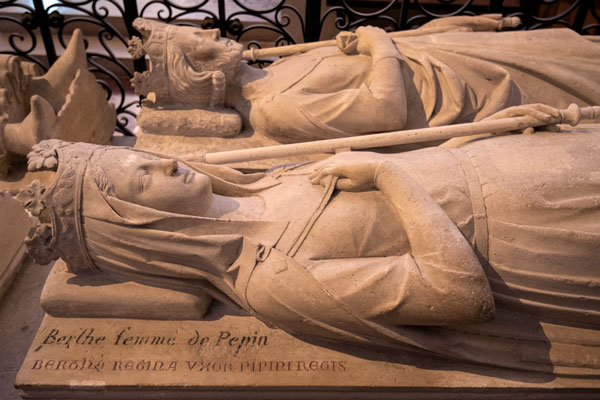
Resting Place of Kings
France's dazzling royal necropolis, the Basilica of Saint Denis, is also the birthplace of Gothic architecture.
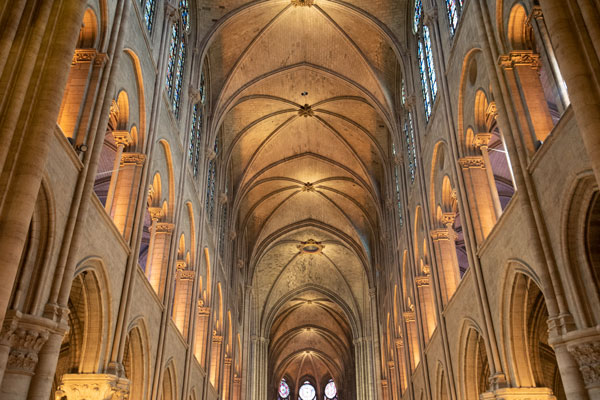
The World Mourns Notre Dame
Notre Dame Cathedral of Paris, France's national cathedral, was badly damaged in a fire.
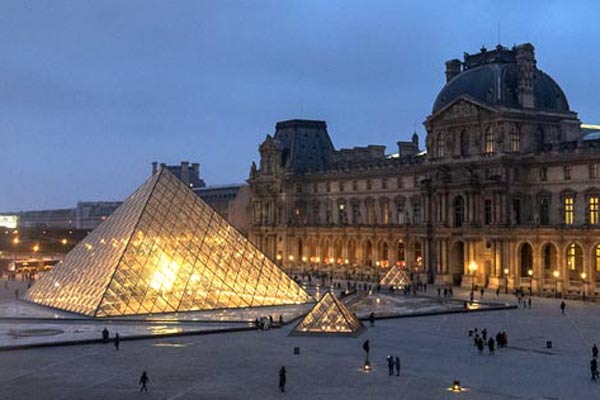
What is the Louvre?
The former palace, the world's largest museum, music video and fashion show venue, and global brand has never been more cool.

Scaffolding the World
Finding a historical site shrouded in scaffolding is disappointing, but it is a valuable tool for preserving the world's heritage.

Treasure Room and Two Palaces
In the French palace at Fontainebleau is a treasure room of dazzling artifacts taken by the French army from a palace in Beijing.
